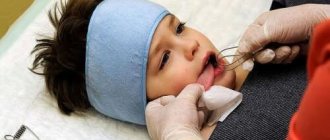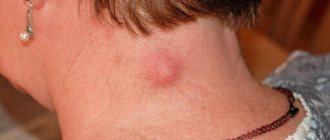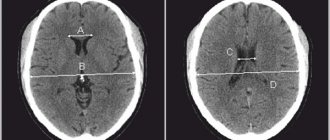In this article you can find out what the head areas are, how this part of the body is structured and why did it appear during evolution in the first place? The article begins with the simplest thing - basic information about the organization.
What is meant by the skeleton of the head or, more simply, the skull? This is a collection of many bones, paired or not, spongy or mixed. The skull contains only two large sections:
- cerebral (the cavity in which the brain is located);
- facial (this is where some systems, such as the respiratory or digestive, originate; in addition, more sensory organs can be found here).
As for the brain region, it is worth mentioning that this area is divided into two:
- cranial vault;
- its foundation.
Evolution
It is important to know that vertebrates did not always have such a large head. Let's dive a little into the past. This part of the body appeared in ancient vertebrates during the fusion of the first three segments of the spine. Before this phenomenon, the same segmentation was observed. Each vertebra had its own pair of nerves. The nerves of the first vertebra were responsible for smell, the second for vision, and the third for hearing. Over time, the load on these nerves increased, it was necessary to process more and more information, which led to the thickening of these segments responsible for these sense organs. So they merged into the brain, and the union of the vertebrae formed the brain capsule (like a skull). Note that even the modern human head is still divided into the segments from which it was formed.
What is the average size of an adult's head? Length - 17-22 cm, width - 14-16 cm, height - 12-16 cm, circumference - 54-60 cm. The length of the head is usually greater than the width, so it is not round, but elliptical. It is also very interesting that the numbers (length, width and height) are not constant, they either increase or decrease. And all this depends on the location of the person.
Why does a newborn need fontanelles?
Each organ in the human body has its own unique purpose, and a child’s system is no exception. So the fontanelles of infants also have their own personal functions.
- Firstly, the fontanelle helps the baby to be born, making the bones of the skull soft and pliable so that, if necessary, they can change shape and, shrinking, move through the birth canal. It is no coincidence that a newborn’s head shape is not round, but elongated, as if slightly compressed on both sides. A little time will pass, and you will notice that the child’s head is gradually changing shape, approaching the appearance of an ordinary human skull. The bones of the skull will become denser and larger in size, and the fontanelles will gradually tighten.
- Secondly, as long as there are fontanelles, the baby’s brain can grow and develop.
- Thirdly, the fontanel is involved in thermoregulation of the body, that is, it helps maintain normal body temperature. And when the temperature rises above 38 degrees, it is the fontanel that helps cool the meninges and the brain itself.
- Fourthly, the fontanelle is a natural shock absorber: despite its fragile and seemingly vulnerable structure, it is the one that is able to protect the child’s brain when the baby falls.
Brain
Before moving on to studying the areas of the head, it is worth saying that the head is considered the most important part of the body for a reason. After all, this is where they are located:
- brain;
- organs of vision;
- hearing organs;
- olfactory organs;
- taste organs;
- nasopharynx;
- language;
- chewing apparatus.
Now we will learn a little more about the brain. What is it and how does it work? This organ is formed from nerve fibers. Neurons (these are brain cells) are able to control the functioning of the entire human body by generating an electrical impulse. In total, twelve pairs of nerves can be observed that control the functioning of organs. Signals sent by the brain reach their destination through the spinal cord.
The brain is kept in fluid all the time, which prevents it from contacting the skull when the head moves. In general, our brain has pretty good protection:
- hard connective tissue;
- soft connective tissue;
- choroid;
- cerebrospinal fluid
The liquid in which our brain “floats” is called cerebrospinal fluid. The pressure of this fluid on the organ is considered to be intracranial pressure.
It is also important that the work of the brain and organs located on the head requires large energy costs. For this reason, we can observe intense blood circulation in this area. This:
- Nutrition: carotid and vertebral arteries.
- Outflow: internal and external jugular veins.
So, at rest, the head consumes about fifteen percent of the body’s total blood volume.
What is a fontanel?
The bones at the base of a newborn’s skull are fastened to each other with “sutures,” and the bone tissue itself is supplied with a large number of blood vessels. This bone tissue is not yet ossified, like in an adult, but soft, consisting in some places of “membranes.” These places are the fontanelles, which are located in areas where several bones of the skull are connected to each other.
Most of us are accustomed to thinking that a baby has only one fontanelle on his head, but in fact there are several of them, six to be precise. The fontanel, which everyone knows about, is located at the very top of the baby’s head, between the parietal and frontal bones. It is called the large fontanel because it is the largest in size: its diameter is approximately 3 cm. The large fontanel is not at all oval in shape, as it seems: it is a diamond shape, and it is easy to notice the pulsation inside it.
Skull and muscles
The skeleton of the head (skull) has an equally complex structure. Its main function is to protect the brain from mechanical damage and other external influences.
The entire human skull is formed by 23 bones. They are all motionless except for one - the lower jaw. As mentioned earlier, two departments can be distinguished here:
- cerebral;
- facial.
Bones related to the facial section (there are 15 in total) can be:
- paired - upper jaw, palatine bone, lacrimal, inferior nasal concha;
- unpaired - lower jaw, vomer, hyoid.
Paired bones of the medulla:
- parietal;
- temporal
Unpaired:
- occipital;
- frontal;
- wedge-shaped;
- lattice.
The entire brain section consists of a total of eight bones.
The cervical region, to which the skull is attached, allows the head to move. Movement is provided by the muscles of the neck. But on the head itself there are also muscle fibers that are responsible for facial expressions, one exception is the masticatory muscles, which are considered the strongest in this area.
When does a newborn's fontanel heal?
Let's understand the norms and timing of fontanelle closure.
Timing of fontanel closure
The large fontanelle in infants closes up between six months and one and a half years.
Due to changes in the configuration of the head after childbirth, a change in the shape and size of the large fontanel is possible. After the head becomes rounded, the size of the crown will decrease.
Half of newborns are born with an overgrown small fontanel. In other children, the fontanel heals within one to two months.
The remaining paired fontanelles are rarely seen in a full-term newborn. If the baby was born with lateral fontanelles, they heal soon after birth.
What affects the closure of fontanelles?
Why are some children born with a pinpoint fontanelle, which soon heals completely, while in others the depression can be felt until 2 years of age?
- Hereditary predisposition. The size of the fontanelles with which the baby was born, as well as the time for their healing, primarily depends on genetic characteristics. By talking with grandmothers and asking them about the parents’ fontanelles, you can predict how the baby’s crown will close.
- The gestational age at which the child was born. Children born prematurely are slightly behind in physical development from their full-term peers. By approximately 2 - 3 years, this difference evens out. But premature babies have their own developmental characteristics. In particular, longer periods of fontanel closure.
- Concentration of calcium and vitamin D in the baby’s body. With calcium deficiency, the overgrowth of the fontanelles may be delayed, and with an excess of the element, the cavity disappears prematurely. But the baby’s diet plays a secondary role here, most often the reason is impaired metabolism.
- Taking medications during pregnancy.
There is also a relationship between the size of the newborn’s fontanelle and the mother’s intake of calcium and multivitamins and the woman’s diet.
But hereditary predisposition plays a primary role in the size of the fontanel at birth.
The fontanel does not heal in time, should I worry?
Dr. Komarovsky answers this question.
Closing of the fontanelles occurs in different ways. Some babies are born with very small fontanelles. In others, the large fontanelle may only close by the age of two. With normal well-being and development of the child, both situations are considered normal. It does not matter when the fontanelle closes in newborns.
The size of the fontanel may indicate the development of the disease. But there is no pathology that would manifest itself only by a change in the size of the fontanel. A pediatrician assesses the child’s health status and the size of the fontanel at each preventive examination.
Head areas
The entire head is conventionally divided into 13 regions. There they also distinguish between paired and unpaired. And so, six of them are classified as unpaired regions.
- The frontal area of the head (attention is focused on it in the next section of the article).
- Parietal (detailed information will be presented to your attention later).
- Occipital (discussed in more detail in a separate section of the article).
- Nasal, which completely matches the contour of our nose.
- Oral, also corresponds to the contour of the mouth.
- The chin, which is separated from the mouth by the geniolabial groove.
Now we move on to listing the seven paired areas. These include:
- The buccal region is separated from the nose and mouth by the nasolabial groove.
- Parotid-masticatory (contours of the parotid gland and muscles responsible for the chewing reflex).
- The temporal region of the head (the contours of the scales of the temporal bone, located below the parietal region).
- Orbital (outline of the eye sockets).
- Infraorbital (below the eye sockets).
- Zygomatic (cheekbone contour).
- Mastoid (this bone can be found behind the auricle, which, as it were, covers it).
How to care for a fontanel?
The presence of a fontanel becomes a cause of fear in some parents, who are afraid of injuring the child’s head through it. Normally, the crown can pulsate, be sunken when thirsty, and even swell when the baby is crying. If the baby’s general condition is not disturbed and he behaves as usual, then there is no reason to worry.
There are no special rules for caring for the crown. By repeating normal daily routines, such as bathing your baby, brushing your baby's hair, or stroking the head, the risk of injury is reduced. Of course, you need to make sure that the baby doesn’t fall and hit his head. But this rule applies to children of any age and is not related specifically to the presence of a fontanel.
In order not to miss neurological problems, you need to monitor the baby’s development and see a pediatric neurologist. For children under one year of age, the schedule of visits to this doctor is as follows: 1, 3, 6, 9 and 12 months. These are periods of active development of new skills in children. Consulting a doctor will help you identify problems, if any. And if everything is in order, this will give you confidence that the baby is developing normally and his state of health is healthy.
Frontal region
Now we move on to a detailed examination of the frontal region of the head. The boundaries of the anterior section are the nasofrontal suture, the supraorbital edges, the posterior section is the parietal region, the sides are the temporal region. This section even covers the scalp.
As for the blood supply, it is carried out through the following arteries:
- supratrochlear;
- supraorbital.
They arise from the ophthalmic artery, which is a branch of the carotid artery. A well-developed venous network is observed in this area. All vessels of this network form the following veins:
- supratrochlear;
- supraorbital.
The latter, in turn, partially flow into the angular and then into the facial veins. And the other part goes into the eye.
Now briefly about the innervation in the frontal region. These nerves are branches of the ophthalmic nerve and have names:
- supratrochlear;
- supraorbital.
As you might guess, they pass together with the vessels of the same name. Motor nerves are branches of the facial nerve called temporal.
What does the three crowns on the head of women, men, children mean: folk signs, esoteric opinion
Three crowns are much less common. Again, thanks to them, a person has extraordinary abilities. According to magicians, children with three swirls of hair on the back of their heads are unique and are called indigo.
According to scientific research in the field of phrenology, people with three marks depend on the rhythms that set the world around them, the chronological clock. Because of this, men and women do not control their states, feelings, personal rhythm, sensations. These people are irresponsible, dependent on others, and cannot keep their word. Their opinions often change; stability is not for such individuals.
A man has two crowns - what does it mean?
Men with three crowns are lucky in love. Such extraordinary personalities appeal to many ladies. They have a cool disposition, a complex character, but they have genius abilities. These individuals complete everything with special passion if it is their favorite topic.
Parietal region
This area is limited by the contours of the bones of the crown. You can imagine it if you draw projection lines:
- in front - coronal suture;
- posterior - lambdoid suture;
- sides - temporal lines.
Blood supply is facilitated by arterial vessels, which are branches of the parietal branches of the temporal artery. The outflow is the parietal branch of the temporal vein.
Innervation:
- in front - the terminal branches of the supraorbital and frontal nerves;
- sides - auriculo-vesical nerve;
- posterior - occipital nerve.
What should you be wary of?
Up to a year, parents should come to the pediatrician for a routine examination once a month. The process of overgrowth of the fontanel is controlled by a pediatrician. As parents spend more time with their baby, there are certain signs that should alert them. With such symptoms, it is advisable to contact a pediatric neurologist as soon as possible:
- Slow overgrowth of the crown (poor overgrowth in children born with low body weight)
- Soft fabric size more than 4 cm
- Closing too early (between 1 and 8 months of age)
- Sunkenness
Sometimes, the skin in the soft part of the head sinks (due to hot weather or elevated temperature, exicosis of the body occurs). The child needs to be given boiled water to drink and the crown of his head to recover. If it is tense and sticks out, the baby should be shown to a doctor. Only a neurologist can diagnose whether this is normal or a symptom of pathology.
Occipital region
The occipital region of the head is located below the parietal region, and is limited to the posterior region of the neck. So, the boundaries:
- top and sides - labdoid suture;
- bottom - the line between the tops of the mastoid processes.
Arteries contribute to blood supply:
- occipital;
- posterior ear.
The outflow is the occipital vein, and then the vertebral vein.
Innervation is carried out by the following types of nerves:
- suboccipital (motor);
- greater occipital (sensitive);
- lesser occipital (sensitive).
How to care for a fontanel?
The presence of a fontanel becomes a cause of fear in some parents, who are afraid of injuring the child’s head through it. Normally, the crown can pulsate, be sunken when thirsty, and even swell when the baby is crying. If the baby’s general condition is not disturbed and he behaves as usual, then there is no reason to worry.
There are no special rules for caring for the crown. By repeating normal daily routines, such as bathing your baby, brushing your baby's hair, or stroking the head, the risk of injury is reduced. Of course, you need to make sure that the baby doesn’t fall and hit his head. But this rule applies to children of any age and is not related specifically to the presence of a fontanel.
In order not to miss neurological problems, you need to monitor the baby’s development and see a pediatric neurologist. For children under one year of age, the schedule of visits to this doctor is as follows: 1, 3, 6, 9 and 12 months. These are periods of active development of new skills in children. Consulting a doctor will help you identify problems, if any. And if everything is in order, this will give you confidence that the baby is developing normally and his state of health is healthy.
Fontanas are non-ossified areas that connect the bones of the skull of newborns. For some parents, they are a matter of concern, believing that if you accidentally press on them, you can damage the brain. But such prejudices are absolutely meaningless, since, in addition to the skin, it is also covered with sealing bone tissue, which is simply impossible to damage by accidental pressure.
Newborns have more than one fontanelle, as almost all parents believe. There are anterior (large), posterior (small), wedge-shaped, mastoid. All the attention of pediatricians and neurologists is directed to the large anterior and small posterior ones, since the rest are very small and, as a rule, overgrow immediately after birth.
Nervous system
The article briefly talks about the nervous system of some areas of the human head. From the table you will find out more detailed information. In total, the head contains 12 pairs of nerves, which are responsible for sensations, the secretion of tears and saliva, the innervation of the muscles of the head, and so on.
| Nerve | Brief Explanation |
| Olfactory | Affects the nasal mucosa. |
| Visual | It is represented by a million (approximately) tiny nerve fibers, which are the axons of the neurons of the retina. |
| Oculomotor | Acts as muscles that move the eyeball. |
| Block | Dealt with irritation of the oblique muscle of the eye. |
| Trigeminal | This is the most important nerve located on our head. It innervates:
|
| Abductor | Innervation of the rectus muscle of the eye. |
| Facial | Innervation:
|
| vestibulocochlear | It is a conductor between the receptors of the inner ear and the brain. |
| Glossopharyngeal | Innervates:
|
| Wandering | It has the most extensive area of innervation. Innervates:
|
| Additional | Motor innervation of the pharynx, larynx, sternocleidomastoid and trapezius muscles. |
| Sublingual | Thanks to the presence of this nerve, we can move our tongue. |
Let's sum it up
Fontanas are anatomical formations of membranous tissue located on the baby’s head. Thanks to the presence of fontanelles, the head can easily pass through the birth canal, changing its shape (configuration).
The size and timing of overgrowth of fontanelles help pediatricians suspect changes in the baby’s health status. But even an experienced specialist cannot make a diagnosis based only on the size of the fontanelle, because each disease has a number of other important symptoms.
Many questions and worries arise among young parents around fontanelles. Most often, myths about the fontanelle have no basis and are quickly debunked by a pediatrician. For the harmonious development of the baby, regular walks and rational feeding, love and care from mothers and fathers are important.
Circulatory system
When studying the anatomy of the head, one cannot ignore such a complex but very important topic as the circulatory system. It is she who provides blood circulation to the head, thanks to which a person can live (eat, breathe, drink, communicate, and so on).
The functioning of our head, or rather the brain, requires a lot of energy, which requires a constant flow of blood. It has already been said that even at rest, our brain consumes fifteen percent of the total blood volume and twenty-five percent of the oxygen that we receive when breathing.
Which arteries supply food to our brain? Mainly:
- vertebrates;
- sleepy.
Its outflow from the bones of the skull, muscles, brain, and so on should also occur. This occurs due to the presence of veins:
- internal jugular;
- external jugular.
When should you worry?
With certain diseases in newborns, late closure of the fontanelle is possible.
- Rickets. In addition to the slow closure of the fontanel, rickets is manifested by a lag in physical development, changes in the musculoskeletal and cardiovascular systems, and decreased immunity. The disease is more common in children born prematurely who did not receive vitamin D as a preventative measure. In a full-term baby, with regular walks and proper nutrition, the risk of developing rickets is minimal.
- Congenital hypothyroidism. This is a congenital disease in which the thyroid gland does not perform its function properly. In addition to changes in the timing of fontanel closure, with hypothyroidism, lethargy, drowsiness, constant constipation, and deviations in the mental and physical development of the child are observed.
- Achondroplasia. It manifests itself as gross disturbances in the development of bone tissue, dwarfism, and a slow rate of closure of the fontanelles.
- Down syndrome. A disease associated with chromosome pathology. Children with Down syndrome have a characteristic appearance and developmental abnormalities.
Arteries
As already mentioned, the vertebral and carotid arteries, which are presented in pairs, supply food to the human head. The carotid artery is the basis of this process. It is divided into 2 branches:
- external (enriches the outer part of the head);
- internal (passes into the cranial cavity itself and branches, providing blood flow to the eyes and other parts of the brain).
Blood flow to the muscles is carried out by the external and internal carotid arteries. About 30% of the brain's nutrition is provided by the vertebral arteries. Basilar provides work:
- cranial nerves;
- inner ear;
- medulla oblongata;
- cervical spinal cord;
- cerebellum.
The blood supply to the brain varies depending on a person's condition. Mental or psychophysiological overload increases this indicator by 50%.
Why does the fontanel sink or protrude?
Normally, the fontanel is located at the level of the skull bones. But sometimes it can sink or protrude. Small deviations are acceptable; sudden changes can signal problems in the body. At the same time, other symptoms will appear: moodiness, poor sleep, nausea and vomiting, fever, convulsions, squint.
Bulging of the fontanelle in a newborn occurs with encephalitis, increased intracranial pressure, hemorrhage, and meningitis. If the bulge appears after the baby hits his head, the cause may be a concussion.
A sunken fontanel often alerts parents that the newborn is dehydrated. This happens especially often against the background of fever, diarrhea, and vomiting.
The body's loss of moisture may also be indicated by: dry skin, cracked lips, general malaise, constipation. It is important to consult a doctor and ensure your baby drinks plenty of fluids. The fontanelle will restore its shape as soon as the body’s water balance returns to normal.
- share with your friends!
Vienna
When considering the anatomy of the human head, it is difficult to ignore a very important topic - the venous structure of this part of the body. Let's start with what venous sinuses are. These are large veins that collect blood from the following parts:
- skull bones;
- head muscles;
- meninges;
- brain;
- eyeballs;
- inner ear.
You can also find another name for them, namely, venous collectors, which are located between the sheets of the lining of the brain. Leaving the skull, they pass into the jugular vein, which runs next to the carotid artery. You can also distinguish the external jugular vein, which is slightly smaller and located in the subcutaneous tissue. This is where blood collects from:
- eye;
- nose;
- mouth;
- chin
Generally speaking, everything listed above is called superficial formations of the head and face.
What can the rate of fontanelle closure predict?
There are diseases that can be recognized by the way the large fontanelle overgrows. Therefore, pediatricians examine the crown during each examination of the newborn. But the doctor also focuses on other symptoms that accompany severe pathologies. If the baby feels well and is developing normally, the doctor will explain that there is no reason to worry and will send you home. Rarely, but still there is a different development of the situation.
The fontanelle can heal quickly, up to 3-4 months, if the baby has craniosynostosis. This is a rare disease in which the cranial sutures close prematurely: the skull stops growing, becomes deformed, and intracranial pressure increases.
The newborn's head takes on an unnatural shape, and nausea, vomiting, headaches, and convulsions may begin. The disease is treated surgically.
Another pathology that is sometimes signaled by rapid overgrowth of the fontanel is microcephaly. It is even less common. The patient has a noticeable imbalance in proportions: a small size of the skull, with normal sizes of the rest of the body. The disease is accompanied by mental impairment. There is no special treatment for the disease.
Late closure of the fontanel, usually after one and a half years, may be one of the symptoms:
- Rickets, which develops due to vitamin D deficiency. Other symptoms: sweating and sour smell of sweat, itching, sleep disturbance, poor appetite, increased excitability. Premature babies are at risk. If treatment is started in a timely manner, the problem will be solved without consequences for the child.
- Achondroplasia is a congenital disease in which the growth of skeletal bones and the base of the skull is impaired. Often symptoms can be seen already in the first days after birth: enlarged head, short limbs. Patients are retarded in physical growth and dwarfism is diagnosed. Treatment is aimed at preventing and eliminating severe deformities.
- Hypothyroidism, a condition caused by a persistent lack of thyroid hormones. The child will begin to lag behind in mental and physical development, will be lethargic, drowsy, eat poorly, grow and gain weight. The patient is prescribed hormone replacement therapy.
- Down syndrome, chromosomal pathology. The disease is often detected early in pregnancy.
Muscles
To put it very briefly, all the muscles of our head can be divided into several groups:
- chewable;
- facial expressions;
- cranial vault;
- sense organs;
- upper digestive system.
You can guess the functions performed by their names. For example, chewing ones make the process of chewing food possible, but facial ones are responsible for human facial expressions, and so on.
It is very important to know that absolutely all muscles, regardless of their main purpose, are involved in speech.
What should you be wary of?
Up to a year, parents should come to the pediatrician for a routine examination once a month. The process of overgrowth of the fontanel is controlled by a pediatrician. As parents spend more time with their baby, there are certain signs that should alert them. With such symptoms, it is advisable to contact a pediatric neurologist as soon as possible:
- Slow overgrowth of the crown (poor overgrowth in children born with low body weight)
- Soft fabric size more than 4 cm
- Closing too early (between 1 and 8 months of age)
- Sunkenness
Sometimes, the skin in the soft part of the head sinks (due to hot weather or elevated temperature, exicosis of the body occurs). The child needs to be given boiled water to drink and the crown of his head to recover. If it is tense and sticks out, the baby should be shown to a doctor. Only a neurologist can diagnose whether this is normal or a symptom of pathology.








